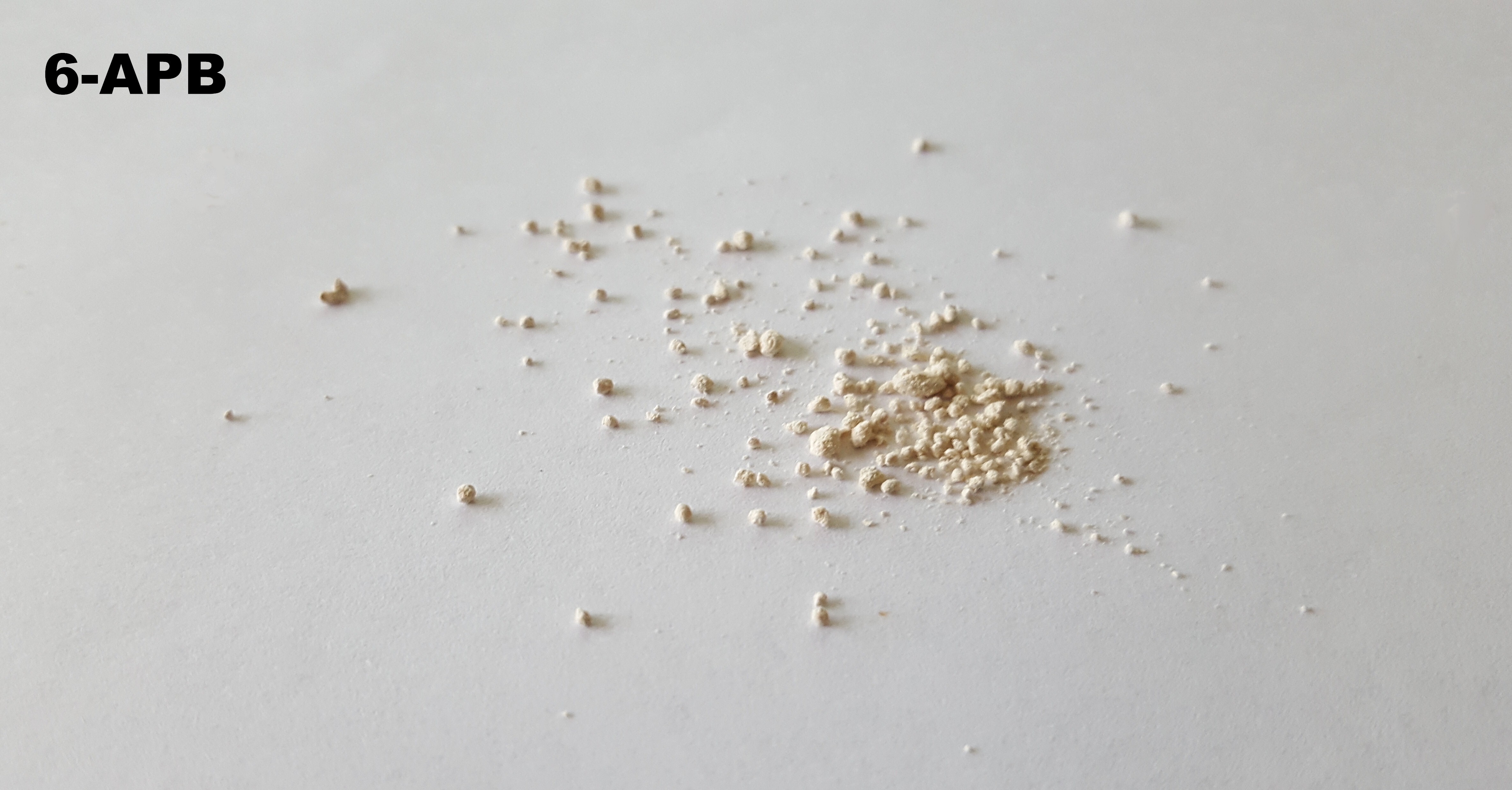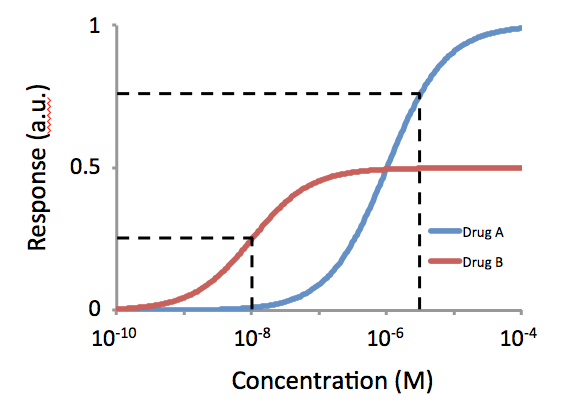|
3-APB
3-APB, also known as 3-(2-aminopropyl)benzofuran, is a drug of the benzofuran family related to α-methyltryptamine (AMT). It is an analogue of AMT in which the indole ring has been replaced with a benzofuran ring. The properties of 3-APB do not yet appear to have been reported. However, derivatives of 3-APB have been studied and described. An example is its 5-methoxy analogue mebfap (5-MeO-3-APB; a benzofuran analogue of 5-MeO-AMT), which is known to have high affinity for the serotonin 5-HT2 receptors. In addition, 3-APBT, the analogue of 3-APB with a sulfur atom instead of an oxygen atom, is a highly potent serotonin–norepinephrine–dopamine releasing agent (SNDRA) and serotonin receptor agonist, with psychedelic-like but not stimulant-like effects in animals. Positional isomers of 3-APB such as 5-APB and 6-APB are monoamine releasing agents and entactogens of the amphetamine and benzofuran families. Besides 3-APBT, all of the possible positional isomers of the APBTs ... [...More Info...] [...Related Items...] OR: [Wikipedia] [Google] [Baidu] |
3-APBT
3-APBT (former developmental code name SKF-6678), also known as 3-(2-aminopropyl)benzo �hiophene, is a monoamine releasing agent and serotonin receptor agonist of the benzothiophene group. It is an analogue of α-methyltryptamine (AMT) in which the indole ring has been replaced with a benzothiophene ring. The drug acts as a potent and well-balanced serotonin–norepinephrine–dopamine releasing agent (SNDRA). It is also a full agonist of the serotonin 5-HT2 receptors, including of the serotonin 5-HT2A, 5-HT2B, and 5-HT2C receptors. 3-APBT produces the head-twitch response, a behavioral proxy of psychedelic effects, in rodents. It does not stimulate locomotor activity in rodents, suggesting that it does not possess stimulant-type effects. The drug has been reported be a weak monoamine oxidase inhibitor (MAOI), specifically of monoamine oxidase A (MAO-A) ( = 16,200nM). 3-APBT was developed by Smith, Kline & French (SKF) as a potential pharmaceutical drug in the late 1950s. ... [...More Info...] [...Related Items...] OR: [Wikipedia] [Google] [Baidu] |
Substituted Benzofuran
The substituted benzofurans are a class of chemical compounds based on the heterocyclic compound, heterocyclic and polycyclic compound, polycyclic compound benzofuran. Many medicines use the benzofuran core as a scaffold, but most commonly the term is used to refer to the simpler compounds in this class which include numerous psychoactive drugs, including stimulants, psychedelic drug, psychedelics and empathogen-entactogen, empathogens. In general, these compounds have a benzofuran core to which a 2-aminoethyl group is attached (at any position), and combined with a range of other substituents. Some psychoactive derivatives from this family have been sold under the name ''Benzofury (other), Benzofury''. List of substituted benzofurans The derivatives may be produced by substitutions at six locations of the benzofuran molecule, as well as saturation of the 2,3- double bond. The following table displays notable derivatives that have been reported: Legislation Su ... [...More Info...] [...Related Items...] OR: [Wikipedia] [Google] [Baidu] |
Monoamine Releasing Agent
A monoamine releasing agent (MRA), or simply monoamine releaser, is a drug that induces the release of one or more monoamine neurotransmitters from the presynaptic neuron into the synapse, leading to an increase in the extracellular concentrations of the neurotransmitters and hence enhanced signaling by those neurotransmitters. The monoamine neurotransmitters include serotonin, norepinephrine, and dopamine; MRAs can induce the release of one or more of these neurotransmitters. MRAs work by reversing the direction of the monoamine transporters (MATs), including the serotonin transporter (SERT), norepinephrine transporter (NET), and/or dopamine transporter (DAT), causing them to promote efflux of non-vesicular cytoplasmic monoamine neurotransmitter rather than reuptake of synaptic monoamine neurotransmitter. Many, but not all MRAs, also reverse the direction of the vesicular monoamine transporter 2 (VMAT2), thereby additionally resulting in efflux of vesicular monoamine neuro ... [...More Info...] [...Related Items...] OR: [Wikipedia] [Google] [Baidu] |
Substituted Benzothiophene
The substituted benzothiophenes are a class of chemical compounds based on benzothiophene. They are closely related to the substituted benzofurans, substituted tryptamines, and to other chemical groups such as the substituted benzodioxoles (or methylenedioxyphenyl compounds). Substituted benzothiophenes include the (2-aminopropyl)benzo �hiophenes (APBTs) 2-APBT, 3-APBT (SKF-6678), 4-APBT, 5-APBT, 5-MAPBT, 6-APBT, 6-MAPBT, and 7-APBT. These drugs have been found to act as serotonin–norepinephrine–dopamine releasing agents (SNDRAs) and, in some cases, as potent serotonin 5-HT2 receptor agonists, analogously to the entactogen MDMA. They do not produce hyperlocomotion in rodents, suggesting that they lack psychostimulant effects. However, those acting as serotonin 5-HT2 receptor agonists have been found to induce the head-twitch response, a behavioral proxy of psychedelic effects, in rodents. These findings suggest that substituted benzothiophenes may have entactogenic and/or ... [...More Info...] [...Related Items...] OR: [Wikipedia] [Google] [Baidu] |
Mebfap
Mebfap, also known as 1-(5-methoxybenzofuran-3-yl)-2-aminopropane, is a serotonin receptor modulator of the benzofuran family. It is an analogue of 5-MeO-AMT in which the indole ring has been replaced with a benzofuran ring. Put another way, it is the analogue of 5-MeO-AMT in which the nitrogen atom in its indole ring has been replaced with a carbon atom to make a benzofuran ring. The drug is a ligand of serotonin receptors similarly to 5-MeO-AMT, but shows about one-sixth the affinity of 5-MeO-AMT. Mebfap was first described in the scientific literature by 1992. See also * 3-APB * Dimemebfe (5-MeO-BFE) * 5-MeO-DiBF * 3-APBT * 1ZP2MA * α-Methylisotryptamine α-Methylisotryptamine (isoAMT or α-Me-isoT) is a synthetic compound belonging to the tryptamine class, known for its psychoactive properties. As a structural analog of α-methyltryptamine (αMT), isoAMT exhibits entactogenic and psychedelic e ... References External links Mebfap - isomer design Amines Benz ... [...More Info...] [...Related Items...] OR: [Wikipedia] [Google] [Baidu] |
1ZP2MA
1ZP2MA, also known as -(indolizin-1-yl)propan-2-ylmethyl)amine or as 1-(indolizin-1-yl)-''N''-methylpropan-2-amine, is a monoamine releasing agent and an indolizine derivative. It is the analogue and positional isomer of the stimulant-like drug α,''N''-dimethyltryptamine (α,''N''-DMT or ''N''-methyl-α-methyltryptamine (''N''-methyl-αMT)) in which the indole ring has been replaced with an indolizine ring. 1ZP2MA has been found to be a potent dopamine releasing agent, with an of 62nM. It is the α-methyl and ''N''-desmethyl analogue of (2-(indolizin-1-yl)ethyl)dimethylamine (TACT908; the indolizine analogue of dimethyltryptamine (DMT)). 1ZP2MA and 2ZEDMA were patented by Tactogen in 2023. See also * 1Z2MAP1O * α-Methylisotryptamine (isoAMT) * BK-NM-AMT * 3-APBT 3-APBT (former developmental code name SKF-6678), also known as 3-(2-aminopropyl)benzo �hiophene, is a monoamine releasing agent and serotonin receptor agonist of the benzothiophene group. It is an analogue o ... [...More Info...] [...Related Items...] OR: [Wikipedia] [Google] [Baidu] |
α-Methylisotryptamine
α-Methylisotryptamine (isoAMT or α-Me-isoT) is a synthetic compound belonging to the tryptamine class, known for its psychoactive properties. As a structural analog of α-methyltryptamine (αMT), isoAMT exhibits entactogenic and psychedelic effects. Pharmacology α-Methylisotryptamine is a monoamine releasing agent and serotonin receptor agonist of the isotryptamine group. It is the isotryptamine homologue (chemistry), homologue of α-methyltryptamine (αMT), which is a more well-known serotonergic psychedelic, entactogen, and stimulant of the substituted tryptamine, tryptamine family with similar pharmacology, pharmacological biological activity, actions. Like αMT, α-methylisotryptamine is a monoamine releasing agent. As the (–)-enantiomer, it specifically acts as a preferential serotonin–norepinephrine releasing agent, serotonin and norepinephrine releasing agent (SNRA), with values of 177nM for serotonin release, 81nM for norepinephrine release, and 1,062nM for do ... [...More Info...] [...Related Items...] OR: [Wikipedia] [Google] [Baidu] |
Entactogen
Entactogens, also known as empathogens or connectogens, are a class of psychoactive drugs that induce the production of experiences of emotional communion, oneness, connectedness, emotional openness—that is, empathy—as particularly observed and reported for experiences with MDMA. This class of drug is distinguished from the classes of hallucinogens or psychedelics and stimulants, although entactogens, for instance MDMA, can also have these properties. Entactogens are used both as recreational drugs and are being investigated for medical use in the treatment of psychiatric disorders, for instance MDMA-assisted therapy for post-traumatic stress disorder (PTSD). Notable members of this class include MDMA, MDA, MDEA, MDOH, MBDB, 5-APB, 5-MAPB, 6-APB, 6-MAPB, methylone, mephedrone, αMT, αET, and MDAI, among others. Most entactogens are phenethylamines and amphetamines, although several, such as αMT and αET, are tryptamines. When referring to MDMA and its cou ... [...More Info...] [...Related Items...] OR: [Wikipedia] [Google] [Baidu] |
6-APB
6-APB (6-(2-aminopropyl)benzofuran) is an empathogenic psychoactive drug of the substituted benzofuran and substituted phenethylamine classes. 6-APB and other compounds are sometimes informally called "Benzofury" in newspaper reports. It is similar in structure to MDA, but differs in that the 3,4- methylenedioxyphenyl ring system has been replaced with a benzofuran ring. 6-APB is also the unsaturated benzofuran derivative of 6-APDB. It may appear as a tan grainy powder. While the drug never became particularly popular, it briefly entered the rave and underground clubbing scene in the UK before its sale and import were banned. It falls under the category of research chemicals, sometimes called "legal highs” if uncontrolled. Because 6-APB and other substituted benzofurans have not been explicitly outlawed in some countries, they are often technically legal, contributing to its popularity. Use 6-APB can be found in freebase, hydrochloride, and succinate form. The free ... [...More Info...] [...Related Items...] OR: [Wikipedia] [Google] [Baidu] |
Potency (pharmacology)
In pharmacology, potency or biological potency is a measure of a drug's biological activity expressed in terms of the dose required to produce a pharmacological effect of given intensity. A highly potent drug (e.g., fentanyl, clonazepam, risperidone, benperidol, bumetanide) evokes a given response at low concentrations, while a drug of lower potency (e.g. morphine, alprazolam, ziprasidone, haloperidol, furosemide) evokes the same response only at higher concentrations. Higher potency does not necessarily mean greater effectiveness nor more side effects nor less side effects. Types of potency The International Union of Basic and Clinical Pharmacology (IUPHAR) has stated that "potency is an imprecise term that should always be further defined", and lists of types of potency as follows: Miscellaneous Lysergic acid diethylamide (LSD) is one of the most potent psychoactive drug A psychoactive drug, psychopharmaceutical, mind-altering drug, consciousness-altering drug, ... [...More Info...] [...Related Items...] OR: [Wikipedia] [Google] [Baidu] |
Substituted Amphetamine
Substituted amphetamines, or simply amphetamines, are a chemical class, class of compounds based upon the amphetamine structure; it includes all derivative (chemistry), derivative compounds which are formed by replacing, or substitution reaction, substituting, one or more hydrogen atoms in the amphetamine core structure with substituents. The compounds in this class span a variety of pharmacological subclasses, including stimulants, Empathogen-entactogen, empathogens, and hallucinogens, among others. Examples of substituted amphetamines are amphetamine (itself), methamphetamine, ephedrine, cathinone, phentermine, mephentermine, tranylcypromine, bupropion, methoxyphenamine, selegiline, amfepramone, amfepramone (diethylpropion), pyrovalerone, MDMA (ecstasy), and 2,5-dimethoxy-4-methylamphetamine, DOM (STP). Some of amphetamine's substituted Derivative (chemistry), derivatives occur in nature, for example in the leaves of ''Ephedra (genus), Ephedra'' and khat plants. Amphetamine w ... [...More Info...] [...Related Items...] OR: [Wikipedia] [Google] [Baidu] |
Positional Isomer
In chemistry, a structural isomer (or constitutional isomer in the IUPAC nomenclature) of a compound is a compound that contains the same number and type of atoms, but with a different connectivity (i.e. arrangement of bonds) between them. The term metamer was formerly used for the same concept. For example, butanol , methyl propyl ether , and diethyl ether have the same molecular formula but are three distinct structural isomers. The concept applies also to polyatomic ions with the same total charge. A classical example is the cyanate ion and the fulminate ion . It is also extended to ionic compounds, so that (for example) ammonium cyanate and urea are considered structural isomers,William F. Bynum, E. Janet Browne, Roy Porter (2014)''Dictionary of the History of Science'' page 218. and so are methylammonium formate and ammonium acetate . Structural isomerism is the most radical type of isomerism. It is opposed to stereoisomerism, in which the atoms and bonding s ... [...More Info...] [...Related Items...] OR: [Wikipedia] [Google] [Baidu] |

